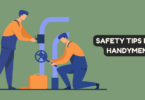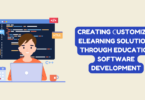
Eric Schmidt presents the technologies that for him are the most disruptive today and those that will be talked about in five or ten years.
Since Eric Schmidt became CEO of Alphabet. inc (Google’s parent company), he has made it very clear that the company’s mission is to “Stay on top of the latest technological innovations and developments.” For this reason, at a recent Alphabet shareholders’ meeting, he unveiled what for him are the most disruptive technologies today and the ones that will be talked about in five or ten years.
1. Virtual reality and augmented reality
It is no secret that Alphabet’s main goal is to use virtual reality, let’s remember that Cardboard was one of the first low-cost devices to hit the market, let’s not forget the failed and revolutionary Google Glass, which is fully expected to be the second version.
Currently, the firm has two other projects of this cut in the bedroom: Daydream, it’s most sophisticated bet, a visor ready to be measured with Oculus (and the rest of the competition) and which has seen the light this week; and Project Tango, an augmented reality environment that will work on smart phones.
2. ”Artificial” food
Some startups like Impossible Food are entering the world of culinary creation. Your goal is to fill our plates with steaks or hamburgers made in a laboratory from plants or algae.
Schmidt argues that this alternative could replace livestock, it is better for the environment and the flavor of the products will equal, over time, that of the most exquisite meats. In addition, if the manufacturing price of these foods is low enough, they could alleviate the problem of hunger in the world.
3. A doctor in your pocket or a portable doctor
The company is aware of the ‘healthy’ evolution of phones and works in this field through Verily, another of Alphabet’s subsidiary companies, whose creations include the smart lenses whose launch Google announced almost two years ago but have not yet been released. seen the light.
They also have more projects such as Google Fit, an application that aims to overshadow Apple’s HealthKit, or a pill full of nanoparticles that, when introduced orally into the body, are capable of analyzing the user’s health in detail, detecting diseases in their initial stages or other anomalies and send periodic reports on their condition directly to a smartphone or wearable.
4. Printed houses, bridges, or skyscrapers
3D printing will mark an important milestone in the world of architecture as it has already done in the world of aeronautics, automotive, or medicine.
The use of this technology not only reduces the costs of the construction process, but also accelerates it and, in addition, facilitates the design of the structures. The company invested last year through Google Ventures in Carbon 3D, a company in this sector.
5. Artificial intelligence
Another of the great trends that generate controversy in the technological world, artificial intelligence, will be, for Schmidt, a determining factor in the not too distant future. The executive also categorically rejects the theory of the ‘rebellion of the machines’ that we could see in the blockbuster saga of ” Terminator ” which Stephen Hawking, Elon Musk, among others fear so much.
Schmidt also believes that time can be cut, many processes simplified and the work done by humans complemented without having their jobs ‘taken away. For example, he affirms that it will be of great help in the educational system by allowing each student to personalize learning (thanks to their ability to recognize patterns) without ever dispensing with the teacher or in industries where it would reduce hazards during work.
6. Autonomous cars
Autonomous vehicles are one of Google’s big bets and options in recent times. The manager affirms that they will be essential to reduce the number of accidents around the world, as well as improve the transport of goods, loads, etc.
The latest that is known about these driverless vehicles is that they will be on the roads in just three years, and the firm is currently teaching them when is a good time to honk the horn and that, perhaps, they have a ‘pedestrian trapping’ sticker. that would minimize any impact should a run-over occur.
Without a doubt, we will have to be aware of these technological trends that soon could be part of our daily lives. If you liked this post, I invite you to continue browsing our blog, to share information or suggest topics that you would like us to include.






